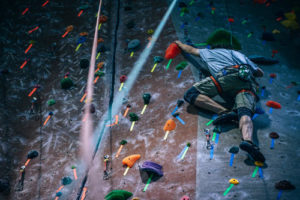You’ve read the books and attended the retreats. You know the benefits of meditation: peace, joy, and calm. And meditating for an hour daily is an excellent practice – one that each of us could use to be happier.
But actually practicing meditation every day is more challenging than ever. Of the many possible reasons, “I don’t have time” often comes up as the big one for not practicing conscious presence. And for some of us, this may be true, especially when it comes to getting a dedicated hour daily. But this approach – the formal, one hour sitting – is just one of many. There are other ways to practice awareness meditation – which do not require more than a minute or two, at a time.
What is the objective of formal meditation?
Formal meditation is simply a way of getting to the place where you’re continuously aware of every moment, but it is easy to lose sight of this fact. The same thing happened to me when I practiced formal meditation exclusively. I was so focussed on the goal (enlightenment), that I lost sight of the fact that the only way to get there was awareness of the present moment. The path, the treadmill, is an illusion. There is no path – only the step you’re taking right now actually exists. The rest is imagination or memory.
The simplest and easiest meditation system ever: One breath meditation
Wait for it . . .
Take one conscious breath,
And just pay attention to the breath you’re taking,
Right NOW.
That’s it? This sounds too simple.
That really is all there is to it. All you need to do is pay attention to one breath – the one that’s happening now. There’s no big production, no trumpets, no magic! It cannot get simpler. Simple, yet really powerful! Every breath you take with deep awareness strengthens your capacity to be present. And you cannot stop breathing. ?
What part of the breath do you need to pay attention to?
You can choose to pay attention to any one of these regions:
- the nose, the nostril area
- the lungs and chest area,
- the diaphragm and the upper abdomen area.
Or, you can be aware of all these areas at once and observe the breath as a whole – coming in and going out. Do what comes naturally to you. Don’t force yourself or your breath.
You often use this technique automatically, without being aware that you’re using a technique: While relieving tension or heaving a sigh of relief.
What happens after this one breath?
Another conscious breath happens! And again, all you need to do is pay attention to that one breath. And the one after that. Just one breath at a time. Nothing more. No past, no future.
What if I get lost in thought?
The moment you realise you’re lost in thought, take a single conscious breath again. All you need to do is take a single breath each time you come back from the thought stream.
What if I cannot maintain a continuous stream of conscious breaths?
The one breath meditation system will not punish you for not maintaining a continuous stream of conscious breaths. ?
In fact, from this perspective, there is no such thing as a continuous stream! Only one breath is important. The one happening right now. If you paid attention to this one, you’re good. Nothing more is needed.



